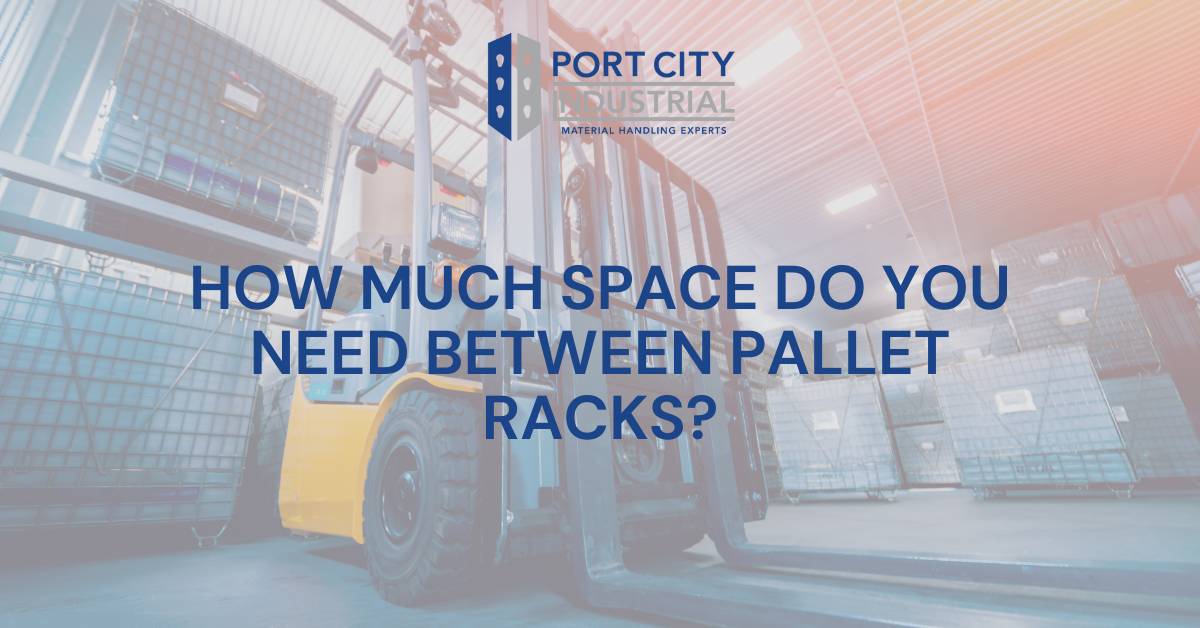

Once you have decided on how many pallet racks you need for your warehouse and the height of each rack, it is time to consider the width of the aisles between racks. This will be determined by your forklift truck or vehicle and its ability to navigate through the warehouse space with ease. In addition, there are other considerations such as sorting lines, pick stations, etc.
The next thing you need to consider is the size of your forklift. There are many different types of forklifts, ranging from small to large. For example, some manufacturers offer a 30-inch reach forklift while others offer a 120-inch reach model. If you're just starting out with pallet racking and need something that can handle small loads, then it's best to invest in a smaller model with less weight capacity (to reduce the chances of tipping). However, if you want something that can hold more weight or do more heavy lifting tasks such as moving pallets through narrow spaces without bumping into them (which could injure someone or damage property), then I'd recommend getting something larger instead. In addition to considering what type(s) of materials will be used within each warehouse environment (elevated vs ground level), there are many other things about a warehouse building that need to be considered.
If you have pallet racks, then you need to make sure that the aisles between them are wide enough for forklifts to pass through. If your forklift drivers are driving racking with pallets on them, then you should also ensure that your aisle widths allow enough room for the pallet jacks to maneuver safely in and around the racking if needed.
Pallet jacks are a common piece of equipment used to move pallets around the warehouse. They require a clear space of at least 1.5 meters (5 feet) in order to operate properly and effectively. If you have narrow aisles or multiple levels, you may need to consider using pallet jacks that can move sideways in addition to moving forward and backward.
If you have a warehouse with narrow aisles, then the racks will need to be spaced closer together. This is because forklifts and people need to be able to get through the aisles without having their paths obstructed by pallet racking. In contrast, wide-aisle warehouses are more flexible in terms of rack positioning. The spacing between racks can be greater than in narrow aisle warehouses.
Racking spacing is an important consideration when determining the layout of your warehouse. The size of a pallet determines the width of an aisle, and this in turn determines how wide it can be for forklifts to maneuver through.
The recommended minimum racking spacing is 600mm (24 inches) apart, allowing for two pallets side-by-side on each level, with room for a forklift to operate safely alongside them.
However, if you have very large products or bulky loads that require more space between them while they are being moved around on pallets, then you might need even wider aisles.
A good rule of thumb is to add 50mm (2 inches) per pallet width so if they are 500mm (20 inches) apart. Then there will be enough room for all types of loads, including those that have been packaged in cardboard boxes and banded together tightly with stretch wrap, before being placed onto their new home within your warehouse storage facility!
The above information is a good starting point for thinking about how much space you need between pallet racks. Keep in mind that there are many factors to consider when calculating the appropriate spacing for your warehouse racking system, including but not limited to, forklift requirements, aisle widths and forklift clearance height restrictions. To ensure safety and efficiency while moving products throughout your facility, we recommend consulting an engineer who can help you by performing an analysis of your specific needs before choosing a layout or purchasing equipment.
If you would like to speak to one of our professionals, make sure to give us a call today and we can help you to create a workspace that is both safe and secure. Call us today at (251) 277-3444 and let us help you create the warehouse of your dreams!